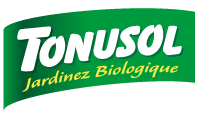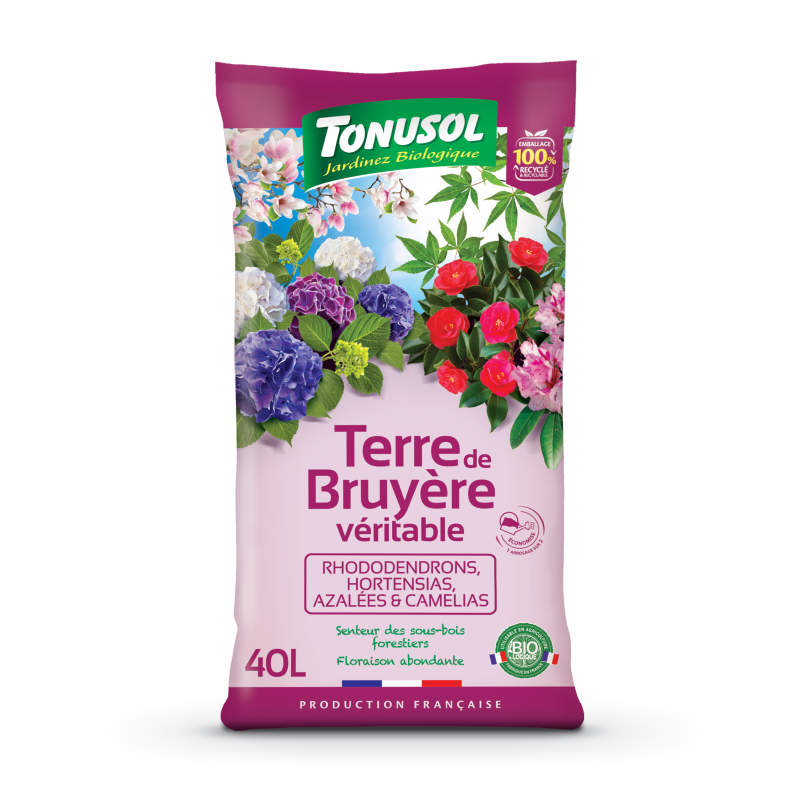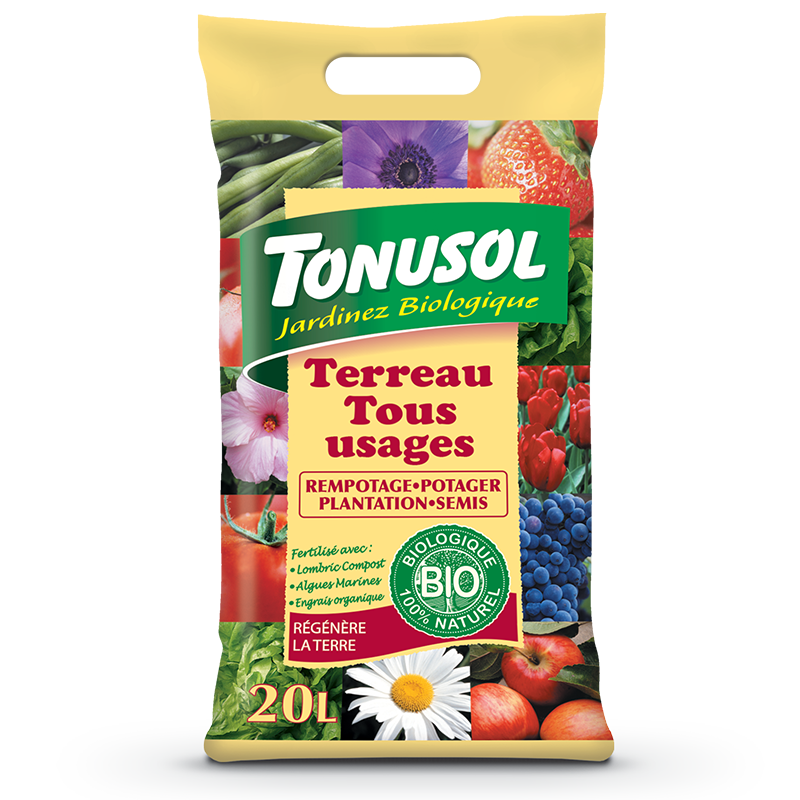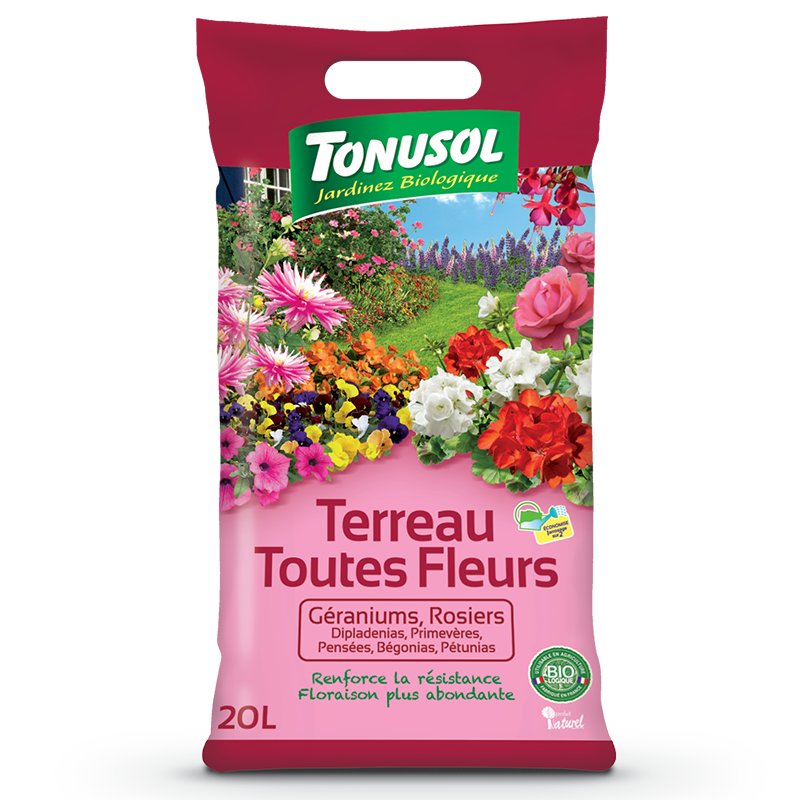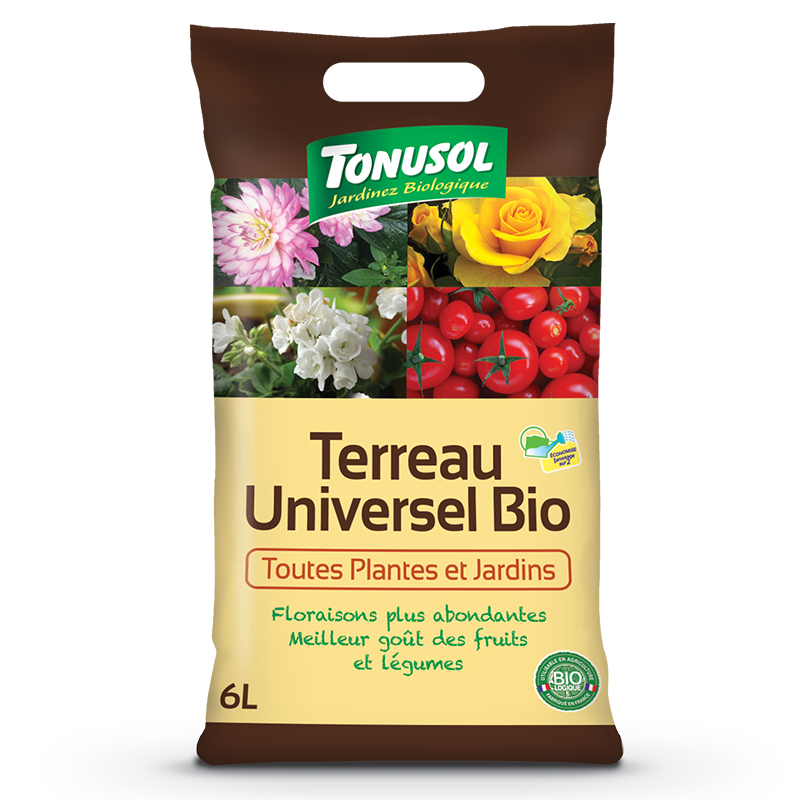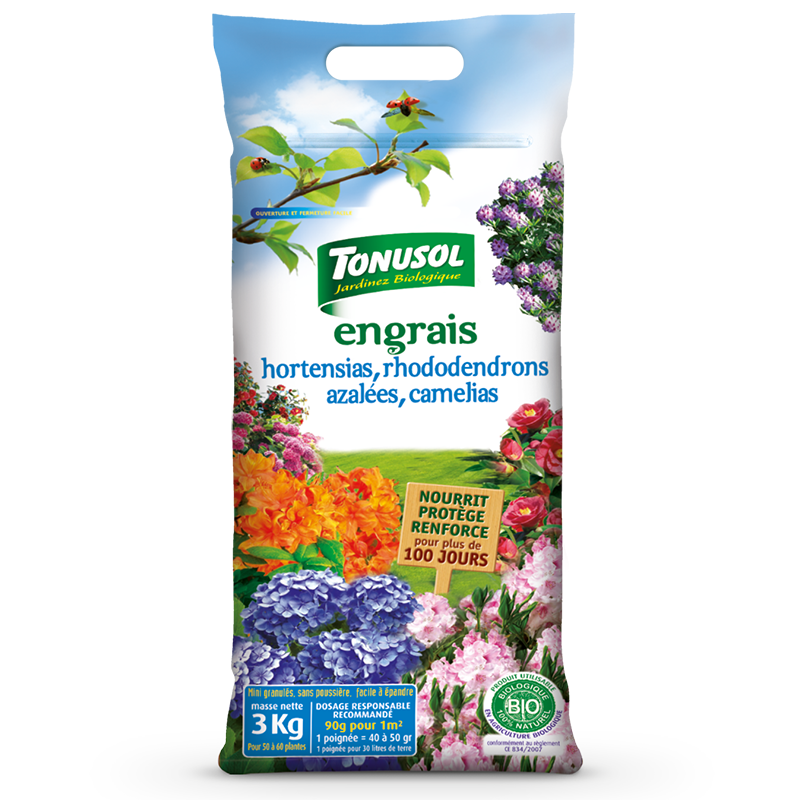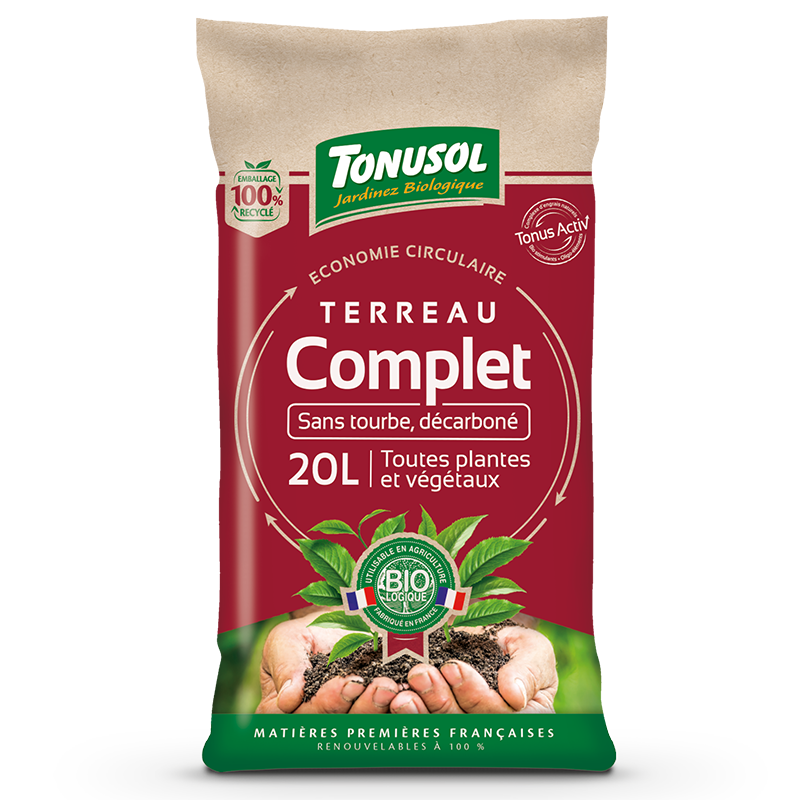Organic Genuine Heath Soil
Tonusol’s Organic Genuine Heath Soil is intended for all flowering plants: azaleas, rhododendrons, hydrangeas, camellias, magnolias, Japanese maples, cyclamens, primroses, as well as all green plants: ferns, heaths, crotons, sansevierias, platyceriums…
Suited for flowering plants: azaleas, camellias, rhododendrons, hydrangeas, cyclamens, primroses, gerberas, gloxinias, Japanese maples, amaryllis, saintpaulias, magnolias.
Spécificités
Genuine Heather Soil: the best substrate for your acid-loving plants
Ready to use, heather soil is intended for all flowering plants: azaleas, rhododendrons, hydrangeas, camellias, magnolias, Japanese maples, cyclamens, primroses but also all green plants such as ferns, heathers, crotons, sansevierias, phatyceriums..
Of very high quality, it will ensure the recovery, growth and flowering of all plants that do not tolerate limestone.e forest heath soil, 100% natural, from the Sologne region in France.
- Fertilized with Lombric Compost.
- Smells of forest undergrowth.
- Bountiful blooming.
NFU 44-551 growing medium / 100% heather soil from Sologne.
Why use "REAL" heather soil and not "SO-CALLED" heather soil?
"So-called" heather soil is mainly composed of peat, a mixture of several materials (pine bark, compost, etc.) and fertilizer. This substrate aims to imitate real heather soil and to get closer to the natural environment in which these acid-loving plants grow. It is important to know that this type of soil is not specifically linked to heather. Although cheaper, this substrate is often too acidic for these plants.
The "real" Tonusol heather soil is composed of 100% forest soil from Sologne (France). It comes from the decomposition of heather (stems, leaves, roots). It is found where heather grows naturally, such as in undergrowth rich in sand or at the foot of conifers. Naturally acidic, an essential element for these acid-loving plants that do not tolerate limestone, it is porous, aerated and ready to use without the incorporation of other products. Real heather soil has a cultivation autonomy of at least 6 months, water inputs are reduced by 50%.
Avantages produit




Conseils d'utilisation
Lieu d'utilisation

A l'intérieur

Balcon / Terrasse

Jardin

A l'intérieur

Balcon / Terrasse

Jardin
How to use Tonusol vegetable fertilized soil
- J
- F
- M
- A
- M
- J
- J
- A
- S
- O
- N
- D
100% Genuine forest heath soil, 100% natural, from the Sologne region in France.
· REPOTTING AND PLANTING IN GARDEN BEDS
- The best time is in fall after blooming for flowering plants. For green plants, the best time is spring before new leaves starts popping up.
- Choose a pot larger than the previous one by 2 to 4 cm (0.8 to 1.6 inch).
- Pull out the root ball without untangling it nor damaging the roots.
- Cut off the roots and rootlets present that were at the bottom of the pot and against its walls.
- Place gravel or shards at the bottom of the new pot.
- Fill the pot with Tonusol’s Genuine Heath Soil up to 2 cm (0.8 inch) from the rim, then pack lightly.
- Water generously.
· PLANTING IN OPEN GROUND
Flowerbeds:
- Dig a hole 50 cm deep (20 inches) and 60 cm wide (24 inches) or 3 times the diameter of the root ball to allow for roots to spread.
- If the soil is calcareous, place a perforated plastic sheet or clay pebbles at the bottom of the hole.
Garden beds and planters:
- Make sure that water drainage is adequate by placing a layer of non-calcareous gravel at the bottom. Fill the hole with Tonusol’s Genuine Heath Soil and pack lightly.
- Water generously.
· TRANSPLANTING, SOWING IN OPEN GROUND
When you prepare the ground, incorporate some Tonusol’s Genuine Heath Soil to the surface.
· ANNUAL CARE
Once or twice a year, in fall and spring, spread a 5 cm layer (2 inches) of Tonusol’s Genuine Heath Soil. Incorporate with a cultivator and water generously.
· REPOTTING AND PLANTING IN GARDEN BEDS
- The best time is in fall after blooming for flowering plants. For green plants, the best time is spring before new leaves starts popping up.
- Choose a pot larger than the previous one by 2 to 4 cm (0.8 to 1.6 inch).
- Pull out the root ball without untangling it nor damaging the roots.
- Cut off the roots and rootlets present that were at the bottom of the pot and against its walls.
- Place gravel or shards at the bottom of the new pot.
- Fill the pot with Tonusol’s Genuine Heath Soil up to 2 cm (0.8 inch) from the rim, then pack lightly.
- Water generously.
· PLANTING IN OPEN GROUND
Flowerbeds:
- Dig a hole 50 cm deep (20 inches) and 60 cm wide (24 inches) or 3 times the diameter of the root ball to allow for roots to spread.
- If the soil is calcareous, place a perforated plastic sheet or clay pebbles at the bottom of the hole.
Garden beds and planters:
- Make sure that water drainage is adequate by placing a layer of non-calcareous gravel at the bottom. Fill the hole with Tonusol’s Genuine Heath Soil and pack lightly.
- Water generously.
· TRANSPLANTING, SOWING IN OPEN GROUND
When you prepare the ground, incorporate some Tonusol’s Genuine Heath Soil to the surface.
· ANNUAL CARE
Once or twice a year, in fall and spring, spread a 5 cm layer (2 inches) of Tonusol’s Genuine Heath Soil. Incorporate with a cultivator and water generously.
